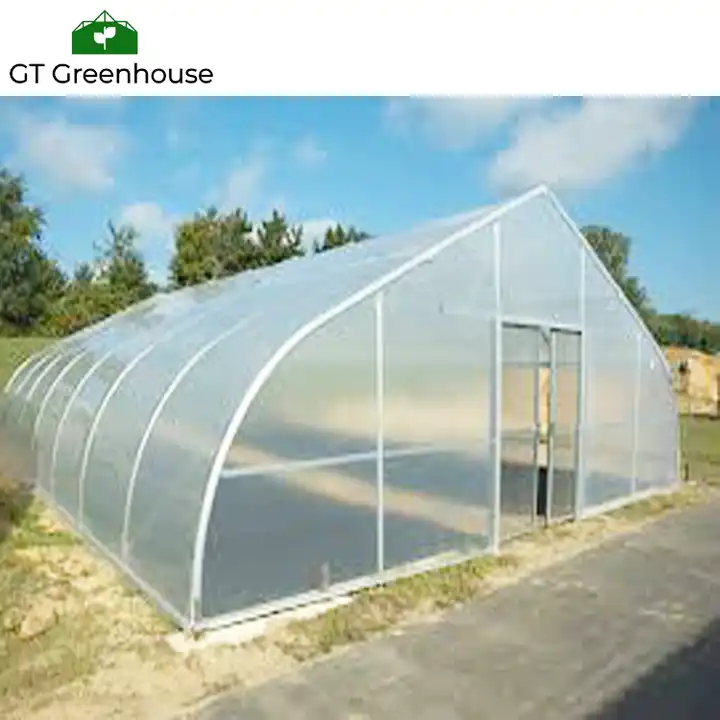Introduction
Greenhouse polycarbonate has revolutionized the agricultural industry by offering a versatile and durable alternative to traditional greenhouse coverings. This transparent, thermoplastic material provides numerous advantages, including excellent light transmission, superior insulation properties, and exceptional durability, making it an ideal choice for modern greenhouse construction. In this article, we will explore the characteristics and benefits of greenhouse polycarbonate and its significant impact on agricultural practices.
Characteristics of Greenhouse Polycarbonate:
- Light Transmission:
Greenhouse polycarbonate possesses outstanding light transmission properties, allowing for optimal photosynthesis and plant growth. The material allows a high percentage of natural sunlight to penetrate the greenhouse, providing plants with the necessary light spectrum for healthy development and increased crop yields. - Thermal Insulation:
Polycarbonate has excellent thermal insulation properties, enabling greenhouse structures to maintain stable temperatures throughout the day and night. The material helps retain heat during colder seasons while minimizing heat loss, reducing energy consumption and heating costs. This insulation capability creates a favorable environment for plant growth, even in regions with extreme weather conditions. - Durability and Impact Resistance:
Greenhouse polycarbonate is highly durable and resistant to impact. It can withstand hailstorms, heavy winds, and other external forces, ensuring the long-term integrity of the greenhouse structure. Unlike glass, polycarbonate is less prone to shattering, making it a safer option for agricultural applications. - UV Protection:
Polycarbonate sheets are often treated with UV inhibitors to prevent degradation and yellowing caused by prolonged exposure to the sun’s ultraviolet (UV) radiation. This UV protection ensures the longevity of the material and maintains its optical clarity, allowing for consistent light transmission over an extended period. - Lightweight and Easy to Install:
Greenhouse polycarbonate is lightweight compared to traditional materials like glass, making it easier to handle and install. The lightweight nature of polycarbonate reduces the structural load on the greenhouse frame, allowing for more design flexibility and cost-effective construction.
Benefits of Greenhouse Polycarbonate:
- Enhanced Crop Growth and Yield:
The exceptional light transmission properties of polycarbonate promote uniform light distribution within the greenhouse, ensuring consistent plant growth and higher crop yields. The material’s transparency allows for optimal utilization of natural sunlight, reducing the need for artificial lighting and associated energy costs. - Improved Energy Efficiency:
The thermal insulation capabilities of greenhouse polycarbonate contribute to energy efficiency. By retaining heat during colder periods and minimizing heat loss, growers can reduce their reliance on heating systems, leading to significant energy savings and reduced environmental impact. - Increased Crop Protection:
Greenhouse polycarbonate acts as a protective barrier against external elements, such as harsh weather, pests, and diseases. Its impact resistance properties make it less susceptible to damage, ensuring the structural integrity of the greenhouse and safeguarding crops from potential threats. - Design Flexibility:
Greenhouse polycarbonate sheets are available in various sizes and thicknesses, allowing for customization and flexibility in greenhouse design. The material can be easily curved or bent to fit different architectural requirements, enabling the construction of innovative and aesthetically pleasing greenhouse structures. - Longevity and Cost-Effectiveness:
Greenhouse polycarbonate is a long-lasting material that resists degradation over time. Its durability and resistance to impact and weathering result in reduced maintenance and replacement costs compared to other greenhouse covering options.
Conclusion
Greenhouse polycarbonate has become a game-changer in modern agriculture, offering a versatile, durable, and cost-effective solution for greenhouse construction. With its excellent light transmission, thermal insulation, and impact resistance properties, polycarbonate provides an ideal environment for crop growth and protection. By harnessing the benefits of greenhouse polycarbonate, growers can optimize their agricultural practices, enhance crop yields, and contribute to a sustainable and efficient approach to food production.
